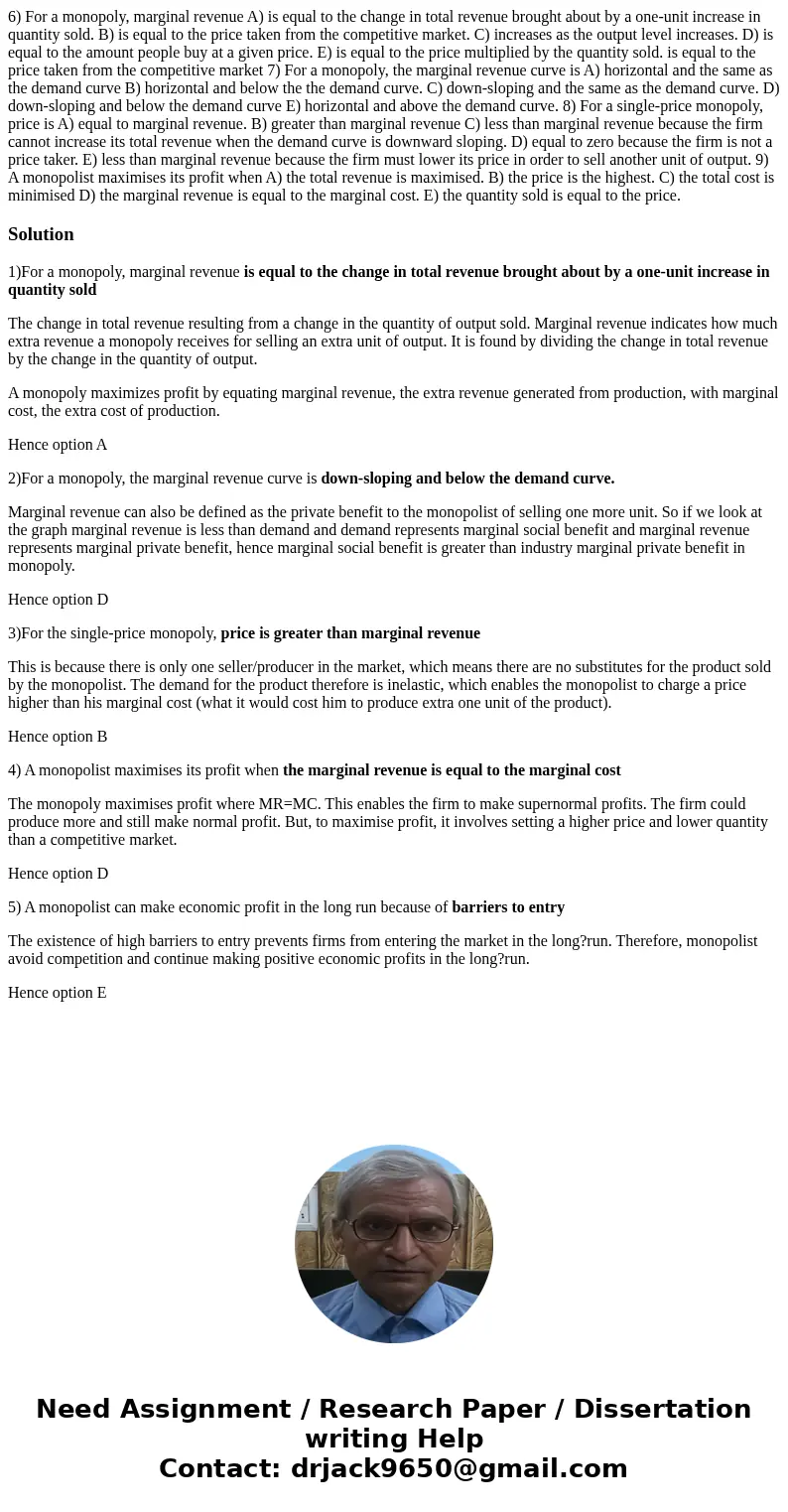6 For a monopoly marginal revenue A is equal to the change i
Solution
1)For a monopoly, marginal revenue is equal to the change in total revenue brought about by a one-unit increase in quantity sold
The change in total revenue resulting from a change in the quantity of output sold. Marginal revenue indicates how much extra revenue a monopoly receives for selling an extra unit of output. It is found by dividing the change in total revenue by the change in the quantity of output.
A monopoly maximizes profit by equating marginal revenue, the extra revenue generated from production, with marginal cost, the extra cost of production.
Hence option A
2)For a monopoly, the marginal revenue curve is down-sloping and below the demand curve.
Marginal revenue can also be defined as the private benefit to the monopolist of selling one more unit. So if we look at the graph marginal revenue is less than demand and demand represents marginal social benefit and marginal revenue represents marginal private benefit, hence marginal social benefit is greater than industry marginal private benefit in monopoly.
Hence option D
3)For the single-price monopoly, price is greater than marginal revenue
This is because there is only one seller/producer in the market, which means there are no substitutes for the product sold by the monopolist. The demand for the product therefore is inelastic, which enables the monopolist to charge a price higher than his marginal cost (what it would cost him to produce extra one unit of the product).
Hence option B
4) A monopolist maximises its profit when the marginal revenue is equal to the marginal cost
The monopoly maximises profit where MR=MC. This enables the firm to make supernormal profits. The firm could produce more and still make normal profit. But, to maximise profit, it involves setting a higher price and lower quantity than a competitive market.
Hence option D
5) A monopolist can make economic profit in the long run because of barriers to entry
The existence of high barriers to entry prevents firms from entering the market in the long?run. Therefore, monopolist avoid competition and continue making positive economic profits in the long?run.
Hence option E

 Homework Sourse
Homework Sourse